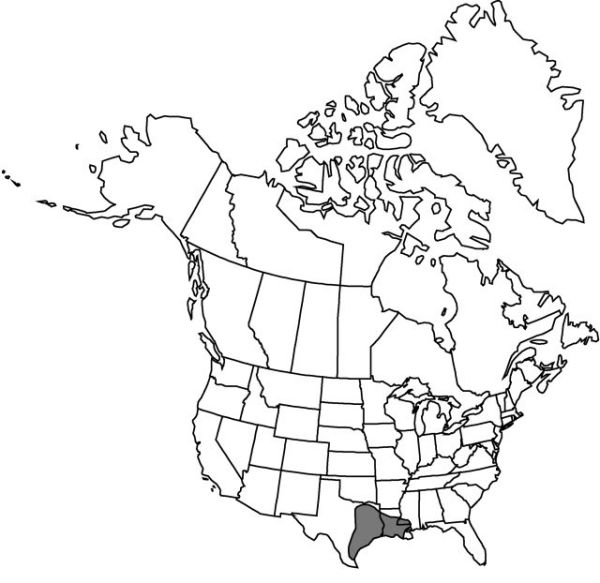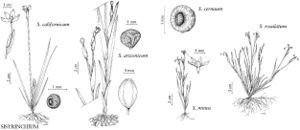Sisyrinchium minus
Boston J. Nat. Hist. 5: 263. 1845.
Herbs, annual, occasionally cespitose, olive green or darker when dry, to 2.6 dm, not glaucous. Stems branched, with 3–6 nodes, 0.5–2.1 mm wide, glabrous, margins entire, similar in color and texture to stem body; first internode 1–4 cm, shorter than leaves; distalmost node with 1–2 branches. Leaf-blades glabrous, bases not persistent in fibrous tufts. Inflorescences borne singly; spathes green, wider than supporting branch, glabrous, keels denticulate; outer 10.6–31 mm, 6–11 mm longer than inner, constricted proximal to apex, margins basally connate 2.7–4.7 mm; inner with keel evenly curved to straight, hyaline margins 0.2–0.5 mm wide, apex acute, ending 1.1–5.4 mm proximal to green apex. Flowers: perianth flaring distally, campanulate basally; tepals lavender-pink to rosy purple, magenta, or white, very rarely yellow or bluish, bases yellow; outer tepals 5–6.3 mm, apex rounded to acute or slightly emarginate, aristate; filaments connate ± entirely, tapering evenly, basally stipitate-glandular 0.8–1.2 mm; ovary similar in color to foliage. Capsules light-brown, turbinate to broadly fusiform, 3.8–5.6 mm; pedicel recurved to pendent. Seeds ± globose, with slight depression on one side, 0.5–0.8 mm, rugulose. 2n = 10.
Phenology: Flowering spring.
Habitat: Moist, sandy areas in prairies and meadows
Elevation: 0–70 m
Distribution

La., Miss., Tex., n Mexico
Discussion
Morphologically Sisyrinchium minus appears closely related to and may even be conspecific with S. tinctorium of Mexico, but further study is needed for resolution.
Selected References
None.
Lower Taxa
"wider" is not a number.
